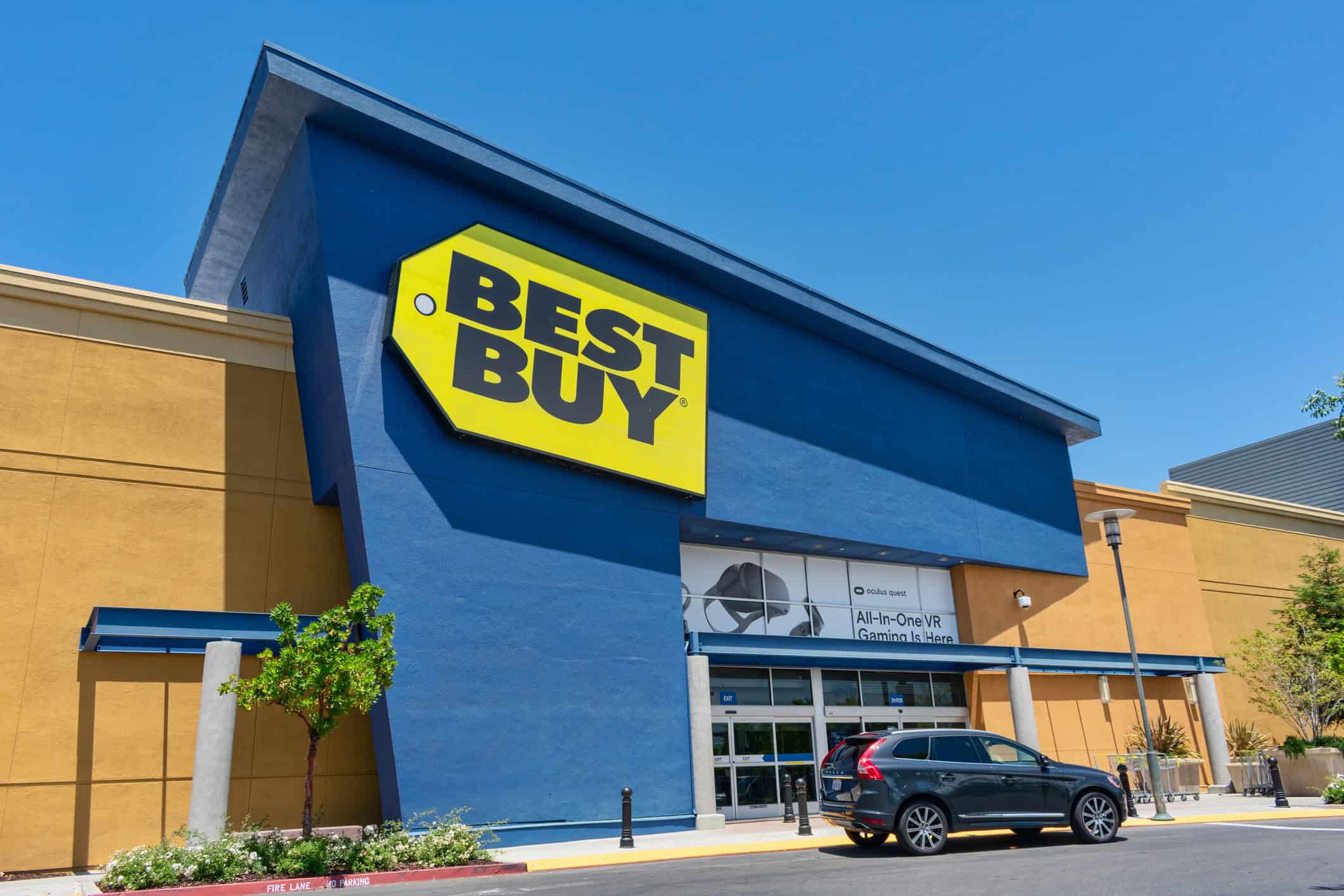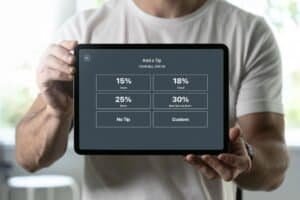
iStock.com/Michael Vi
June 3, 2025
What Should Best Buy’s Tariff Playbook Look Like?
Best Buy lowered its full-year guidance due to tariffs but also laid out a five-point plan to curb further damage.
Revenue for the current year is now expected to be between $41.1 billion and $41.9 billion, down from $41.4 billion to $42.2 billion previously. EPS is now guided in the range from $6.15 to $6.30 versus $6.20 to $6.60 under the prior guidance.
“As we stressed last quarter, international trade is critically important for our business and industry,” said Corie Barry, Best Buy’s CEO, on the retailer’s second-quarter analyst call.
Barry cited five “main themes” to reduce the impact of tariffs:
- Leveraging manufacturing flexibility: Barry noted that since 2018, many of Best Buy’s vendors have established new manufacturing locations “that provide optionality.” As a result of recent sourcing shifts by vendors, China-produced imports represent between 30% and 35% of Best Buy’s cost-of-goods sold (COGS), down from 55% estimated on its fourth-quarter call in March.
- Negotiating costs: The retailer is trying to get vendor partners to absorb part of the tariff burden or cost-optimize products. Barry said this includes “consolidating volume into fewer partners for leverage in negotiations.”
- Increasing country diversification: Best Buy encourages many partners to have at least two locations available to manufacture the same or similar products for distribution across the globe to expand sourcing options.
- Adjusting assortments: Best Buy will review and modify assortments to still “ensure a wide range of customer needs and budgets are met and rationalize where appropriate to consolidate volume.”
- Modifying prices: As of mid-May, Best Buy had already made pricing and promotional adjustments, although the outlook reflects plans to remain competitively priced. Barry told reporters that price hikes are “the very last resort.”
Best Buy’s outlook is based on current tariff levels, including about half of China imports facing 30% tariff rates and the remainder facing 20% tariffs due to the Section 232 semiconductor investigation. About 40% of products are sourced from other Asian countries like Vietnam, India, South Korea, and Taiwan, and they face the baseline tariff rate of 10%.
On the positive side, sales growth is expected this year in computing, including tablets and mobile phones, due to the replacement cycle, AI-innovation, and in-store initiatives. Other potential sales drivers include the Nintendo Switch 2 launch and Ray-Ban Meta smart glasses. However, the outlook reflects expectations that consumers remain “value-focused and thoughtful about big ticket purchases” amid continued inflationary pressures, said Barry.
Circana in April predicted that U.S. consumer technology revenue would return to growth this year with a gain of 1.6%, following eight straight quarters of declines. Positive growth is expected in computers and tablets due to upgraded AI capabilities and updated operating systems, as well as in TVs due to a trend toward purchasing larger screen sizes. Gains are also expected within digital cameras, headphones, and health and fitness trackers.
“Consumers remain very price sensitive — something that will be further amplified by uncertainty surrounding potential trade and economic disruptions,” said Paul Gagnon, VP and technology industry advisor for Circana. “The counterpoint in the consumer’s search for value is their need to keep technology products current, and their desire for innovation, albeit at more affordable price points.”
Discussion Questions
Which of Best Buy’s tariff-mitigation steps will likely offer the biggest payback in the short and long term?
Do you see enough innovation to stimulate healthy growth across the consumer electronics category this year?
Poll
BrainTrust
Jamie Tenser
Retail Tech Marketing Strategist | B2B Expert Storytelling™ Guru | President, VSN Media LLC
Neil Saunders
Managing Director, GlobalData
Kai Clarke
CEO, President- American Retail Consultants
Recent Discussions







Electronics is one of the most tariff-impacted sectors, both because electronics supply chains are so global and hard to shift, and because the items are big ticket so price rises and lower consumer confidence will hit hard. Even with their five point plan, there is no avoiding this for Best Buy. So the best strategy is to ensure it defends existing, and grabs new, market share. It also needs to keep a firm grip on costs, which it has already been doing over recent years.
Best Buy’s product mix makes its business especially sensitive to international trade issues. It’s statement makes clear that the company has thought strategically about this since long before the current tariff mania.
Urging suppliers to assemble products in more than one country is a wise form of hedging, one that the analysts likely appreciate.
Consumer electronics have an element of “fashionableness” that can make early adopters and some fast followers less price sensitive. There will still be some high-margin sales in the year ahead, even as the foundations shift.
Tho I wish them well, and they’ve covered the base of feasbile ideas, there are still two glaring problems:
I think the industry had its huge pent up demand moment during COVID. Some big company has GOT to put taco trucks outside their stores. Everyone is way too heavied out.
What BB is doing is putting the cart before the horse. First, there are no new implemented tariffs in place. Taco Trump has threatened many tariffs, and claimed that hundreds of countries want to negotiate with him to avoid this, but there is nothing that has happened so far. In fact, there are 3 major lawsuits that have recognized that Trump does not have the power to implement Tariffs, since the ability to tax and spend lies solely with Congress, not the President. All 3 courts have ruled against Trump, and it is now at the Federal District Cout level, on appeal by the Administration. Furthermore, the International Emergency Economic powers act, which Trump claims to be using, does not even mention the use of tariffs, let alone give this power to the president. All of this will be clarified by the courts, probably by the end of this year. Best Buy is lowering expectations with its guidance, so that it can better exceed these during the fourth quarter of this year, and drive its stock price up when it reports profits and sales during Q1 of next year.
One word… Transparency! Explain why prices are changed and what they have done to help to combat the rising price. Knowledge creates confidence, and Best Buy customers want to know that the brand they trust for quality merchandise at competitive prices is doing everything possible to maintain its reputation.